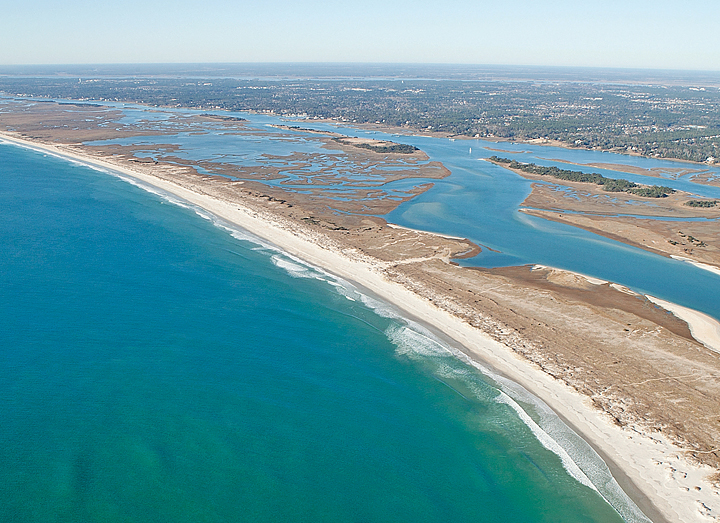With more shellfish lease applications under review for local waters in 2017, the committee that advises state regulators on policies for the Masonboro Island reserve area is reviewing under what conditions shellfish leases could be granted. While there is general agreement that increased oyster production is needed in North Carolina, there are some concerns that new shellfish leases could create other unintended consequences.
The North Carolina Division of Marine Fisheries held a public hearing on three shellfish leases in New Hanover County on Jan. 25, which occurred after the Lumina News press deadline. There could be more oyster farms coming to the Masonboro Island area once a moratorium on new shellfish leases there expires in March, said an official with the North Carolina Coastal Reserve, the organization that oversees the uninhabited island. Of the leases considered on Wednesday, two were in the Masonboro Sound and one in Pages Creek, none of which are protected areas under a moratorium.
The local advisory committees (LAC) for both Masonboro Island and Zeke’s Island met jointly last week to review policy issues on shellfish leasing, as both islands gained new oyster farm leases in 2015 for the waters in protected reserve areas. In 2015, the marine fisheries division granted two leases for the Masonboro Island reserve, a protected area around the island. However, the division placed a moratorium on new leases for areas protected by the North Carolina Coastal Reserve in 2016, after the North Carolina General Assembly approved funding to study how the state can promote more oyster and shellfish cultivation. The moratorium is scheduled to expire in March.
With the moratorium on shellfish leases coming to a close, the coastal reserve is reviewing what guidance, if any, to offer as more applicants for oyster farms are expected in 2017.
The meeting last week for the LAC groups, which are informal advisory groups, gave local stakeholders an opportunity to explore whether any restrictions should be placed on new shellfish leases in the protected areas.
“We are at 5 percent of our historic oyster levels in North Carolina,” said Richard Johnson, a member of the LAC and organizer of the nonprofit Masonboro.org, which provides volunteers to help clean and preserve the island. “If there are any restrictions needed, they should be science-based.”
While oysters are valued for their ability to clean the water, there are some concerns that too many oysters concentrated together could rob nutrients of other marine life downstream. Additionally, Cape Fear Surfrider Foundation Chairman Ethan Crouch said that while shellfish production can be beneficial, it’s not the solution to other pollution problems, like stormwater runoff.
“A bed of oysters in the Masonboro Reserve is not going to solve water-quality issues in the community,” said Crouch, another member of the Masonboro Island Reserve LAC. “We’re trying to do this in a thoughtful manner by looking at possibly permitting a designated number of leases in designated areas.”
Hope Sutton, N.C. Coastal Reserve stewardship coordinator and Southern sites manager, said that local regulators are still working to figure out how to meet signals sent by the North Carolina General Assembly, which has funded studies designed to boost support and interest in shellfish cultivation in North Carolina.
“Because these are dedicated state nature reserves, we have legal obligations to meet the main purpose to make sure that the habitat is protected and will be used for research and education,” Sutton said. “There are a variety of benefits of oysters, as well as some potential concerns. The reality is there’s not as much research that’s as conclusive as we wish it to be.”
Email [email protected]




